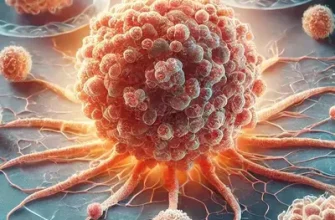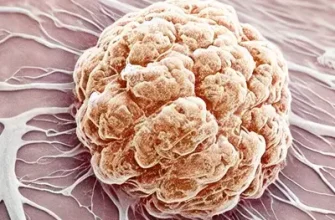Breast discomfort encompasses any type of pain or sensitivity felt in the breast region. It may present as a lingering ache, sharp stabbing feelings, or a sensation of weightiness.
Types and Symptoms of Breast Discomfort
Although breast discomfort is usually temporary and harmless, it can occasionally be linked to underlying medical issues that need to be addressed and treated. Knowing the various types and symptoms of breast discomfort can be beneficial in deciding when to consult a medical professional, as it ranges from minor annoyances to more severe concerns. So, let’s explore the various types of breast discomfort and the associated symptoms:
- Cyclical breast discomfort:
- Symptoms: Women often experience a throbbing or dull ache that fluctuates with their menstrual cycle. It typically affects both breasts but can vary in intensity.
- Causes: Fluctuations in hormone levels during the menstrual cycle, particularly estrogen and progesterone, are known to contribute to cyclical breast discomfort.
- Noncyclical breast discomfort:
- Symptoms: Breast discomfort that is not affected by the menstrual cycle and can range in intensity is referred to as noncyclical breast discomfort. It is commonly experienced as a sudden, intense pain that may be limited to a specific part of the breast.
- Causes: Noncyclical breast discomfort can be attributed to factors such as muscle strain, injury, breast cysts, fibroadenomas (benign tumors), or medication side effects.
- Costochondritis:
- Symptoms: Costochondritis causes inflammation in the cartilage that connects the rib to the breastbone. This condition typically leads to a sharp, stabbing pain in the chest wall that may radiate to the breast.
- Causes: Infections, physical trauma, repetitive strain on the chest area, or underlying conditions like fibromyalgia can trigger costochondritis.
- Mastitis:
- Symptoms: Mastitis is a condition where breast tissue gets infected, causing the affected area to swell, become painful, red, and warm. This condition commonly occurs among women who are breastfeeding and may come with symptoms resembling those of the flu, including fever and chills.
- Causes: Bacterial infection occurs when bacteria enter the milk ducts through a cracked or sore nipple during breastfeeding.
- Breast abscess:
- Symptoms: A breast abscess is a localized pocket of pus within the breast tissue. Symptoms include a painful, swollen lump, redness, tenderness, and sometimes fever.
- Causes: Bacterial infections, such as those leading to mastitis, can progress to a breast abscess if left untreated.
- Breast cancer:
- Symptoms: While breast discomfort alone is not usually a sign of breast cancer, it can be a symptom in some cases. Other possible symptoms include a new lump, changes in breast size or shape, nipple changes, or discharge.
- Causes: Breast cancer occurs when abnormal cells in the breast grow and multiply uncontrollably. It is crucial to consult a healthcare professional promptly if any concerning symptoms persist.
Main Methods to Diagnose for Breast Discomfort
It is essential to diagnose the root cause of the discomfort in order to determine the appropriate course of action. Luckily, there are several methods available to accurately diagnose breast discomfort. Here are the main methods commonly used by healthcare professionals:
- Physical examination: This is the first step in diagnosing breast discomfort. A healthcare provider will carefully examine the breasts, checking for any lumps, redness, swelling, or changes in symmetry. This helps to identify any physical abnormalities that may require further investigation.
- Mammogram: A mammogram is an X-ray of the breast tissue. It is one of the most common screening tests for breast discomfort. During a mammogram, the breasts are compressed between two plates, and images are taken from different angles. This allows for the detection of any abnormalities, such as cysts or tumors, that may not be felt during the physical examination.
- Ultrasound: An ultrasound uses high-frequency sound waves to create images of the breast tissue. It is often used in conjunction with mammography to provide a more detailed evaluation of any abnormalities found. Ultrasound can help distinguish between solid masses and fluid-filled cysts, which aids in determining the nature of the breast discomfort.
- Magnetic Resonance Imaging (MRI): In certain cases, an MRI may be recommended to further evaluate breast discomfort. It uses a magnetic field and radio waves to create detailed images of the breast tissue. An MRI can provide a better view of the breast, especially for women with dense breast tissue or those at high risk for breast cancer.
- Biopsy: A biopsy is performed when an abnormality is detected during one of the previous diagnostic methods. It involves the removal of a small sample of tissue or fluid from the breast for further examination under a microscope. This helps determine whether the abnormality is benign or cancerous.
- Genetic testing: In some cases, genetic testing may be recommended to evaluate the risk of developing breast discomfort. This is especially relevant for individuals with a family history of breast cancer or specific gene mutations, such as BRCA1 or BRCA2.
Treatment Options for Breast Discomfort
Experiencing breast discomfort can be quite distressing and uncomfortable for many women. It can range from tenderness and swelling to pain and sensitivity. While breast discomfort is a common issue, finding the right treatment option can help alleviate the symptoms and provide much-needed relief. Here are five effective treatment options for breast discomfort:
- Over-the-counter pain relievers: One of the first steps in managing breast discomfort is trying over-the-counter pain relievers such as acetaminophen or ibuprofen. These medications can help reduce inflammation and alleviate pain. Always consult with your doctor or pharmacist before taking any medication, especially if you have any underlying health conditions or are taking other medications.
- Supportive bras: Wearing a well-fitting, supportive bra can provide significant relief from breast discomfort. Opt for bras with wide straps and good support to minimize bouncing and movement. Sports bras or specialized bras designed for breast comfort, such as those with extra padding or underwires, can also be helpful.
- Cold or warm compresses: Applying cold or warm compresses to your breasts can help reduce swelling, inflammation, and pain. For cold compresses, you can use ice packs or a bag of frozen vegetables wrapped in a cloth. For warm compresses, soak a cloth in warm water or use a warm water bottle. Alternate between cold and warm compresses to see which provides more relief for your specific symptoms.
- Dietary changes: Some women find that making certain dietary changes can alleviate breast discomfort. Including foods rich in vitamin E, such as almonds, spinach, and sunflower seeds, may help reduce breast pain and tenderness. Additionally, reducing caffeine intake, limiting salt intake, and increasing healthy fats in your diet may also provide relief. Experiment with different dietary adjustments and consult with a registered dietitian for personalized guidance.
- Hormonal treatments: In some cases, breast discomfort may be related to hormonal imbalances or fluctuations, especially during menstruation or menopause. Hormonal treatments, such as oral contraceptives or hormone replacement therapy, may help regulate hormonal levels and alleviate breast discomfort. However, these treatments should be discussed with a healthcare provider, as they come with potential risks and side effects.
Conclusion
It’s important to note that breast discomfort can sometimes be a symptom of an underlying condition, such as fibrocystic breast changes or mastitis. If your symptoms persist or worsen, it is crucial to consult with a healthcare professional for a proper diagnosis and appropriate treatment plan.
Remember, every woman’s experience with breast discomfort is unique. What works for one person may not work for another. Don’t hesitate to reach out to medical professionals for guidance and support to find the most effective treatment option for your specific situation.









